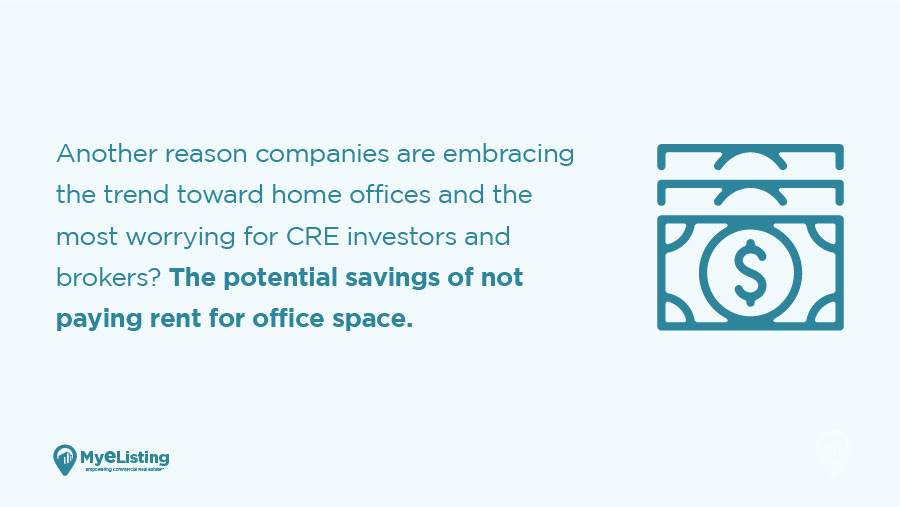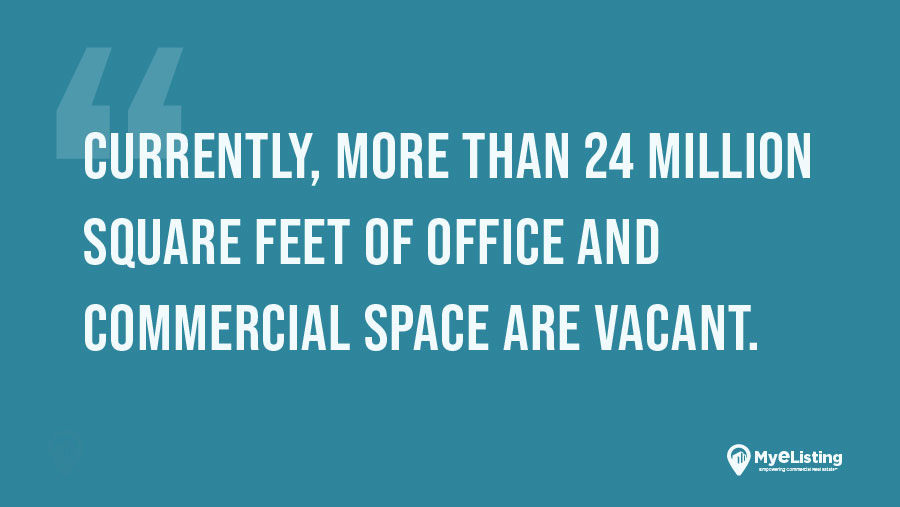Is San Francisco’s Commercial Real Estate Market on the Verge of Collapse?

Specializes in providing actionable insights into the commercial real estate space for investors, brokers, lessors, and lessees. He covers quarterly market data reports, investment strategies, how-to guides, and top-down perspectives on market movements.

Even though recent statistics may suggest otherwise, an increasing number of investors and businesses are concerned about a possible collapse of San Francisco’s commercial real estate market.
While the arrival of the COVID-19 pandemic in early 2020 contributed to a higher number of office building vacancies not only in San Francisco but across the nation, the sudden appearance of the home office in 2020 is now taking permanent hold.
Before we begin to interpret future predictions, let’s take a closer look at the state of the San Francisco CRE market in early 2022.
The Rise and Fall of San Francisco’s CRE Numbers

According to recent data, San Francisco’s commercial real estate market began to falter early in 2022. Office market vacancies increased to over 18% during the first three months of the year.
- Net absorption was negative by over 1.5 million sq. feet in 1Q 2022. This crushed hopes of a future recovery based on the absorption figures recorded for the second half of 2021.
- The worst-hit areas for negative absorption in early 2022: Class A commercial real estate within the North and South Financial Districts and Class A commercial real estate within South of Market (SOMA) East.
- The city’s SOMA neighborhood is home to some of the city’s most popular restaurants, hotels, museums, and event venues.
However, as net absorption figures ran deeply into the red, some analysts remain convinced that San Francisco’s CRE market will be able to recover.
Reasons for this optimism include robust tenant touring activity within office CRE buildings and recent record-levels of venture capital funding.
However, others see a bleaker future, fueled by several factors. One is the abandonment of the traditional office for the home office.
The Rise of the Remote Workplace in California

While many companies and staff alike first viewed working at home as a temporary solution to the 2020 pandemic lockdowns, this quick fix continues to evolve.
Here are some reasons why more companies are abandoning the office workweek:
- Employers have recorded increased productivity for remote workers.
- These workers are, on average, 47% more productive while completing an average of seven more hours of work every week.
- Remote workers report fewer distractions than those still working in an office.
- Workers who formerly commuted to work now have, on average, over eight additional hours of leisure time each week.
Another reason companies are embracing the trend toward home offices and the most worrying for CRE investors and brokers? The potential savings of not paying rent for office space.
Let’s look at the decreasing numbers of CRE tenants, and how these numbers may increase in the next five years.
Uncharted Territory or a Perfect Storm?
A San Francisco-based journalist recently described the future of the local CRE market as a slow-moving train, still in the distance. While it’s easily recognized as a train, it’s still distant, so many don’t interpret the risk headed their way.
Some of the warning signs include:
- Employers like Yelp and Airbnb have either moved their offices from San Francisco or adopted a 100% remote workforce.
- Landlords of office buildings are filing applications for their property values to be reduced in an effort to reduce their tax bills.
- A recent report ranked San Francisco’s downtown recovery as number 60 in a report of 60 cities. Yes, that’s last place.
Some CRE investors and owners have recently decided to sell, either to reduce their losses or because of a reduced office workforce. Were they successful?
No Reasonable Offer Refused?
Owners of two larger downtown buildings on California and Market Streets recently put them on the market.
- The 13-story building at 550 California Street is owned by Wells Fargo. The bank acquired the building 17 years ago, paying $324 per sq. ft.
- After putting the building on the market earlier in 2022, bids came in at 60% to 70% under what the building would have sold for in 2019.
- These bargain-basement bids resulted in Wells Fargo’s decision to postpone the sale indefinitely.
Other CRE buildings within San Francisco, purchased during the peak of the CRE market, have met a gloomier fate. Some have earned the dubious nickname “Zombie Buildings.”
The Not-Walking Dead
A worst-case scenario has taken hold in San Francisco. Some commercial buildings purchased at peak market prices are now abandoned, with few prospects for a profitable future.
These buildings have been nicknamed “Zombie Buildings.”
There are several reasons for a permanently bleak outlook. They include:
- San Francisco’s employers include a high percentage of tech and software companies. Their employees transitioned easily to remote work.
- CRE lenders currently hold a pessimistic view of San Francisco’s CRE market. This makes it difficult for owners of Class B and C buildings to negotiate to refinance.
If you’re wondering if the CRE forecast could get any worse for San Francisco, there’s one more topic to consider: expiring leases.
The Long Goodbye

While some San Francisco commercial buildings are currently enjoying low vacancy rates and collecting peak rents, this picture will be changing soon.
- During the next five years, many office lease agreements that were closed during the city’s economic boom will expire.
- This will further inflate the current vacancy numbers which will cause these buildings’ value to nosedive.
Currently, more than 24 million square feet of office and commercial space are vacant. This adds up to around 35 Transamerica Pyramid Centers sitting empty.
While the future of San Francisco’s CRE is making some investors nervous, there are a few who aren’t.
Let’s take one last look at a CRE investor who’s feeling optimistic about the City by the Bay.
Michael Shvo’s Big Commercial Real Estate Deal
Not all San Francisco investors are feeling pessimistic. Earlier this year, the Transamerica Pyramid Center began a $250 million renovation, according to luxury real estate development and investment firm SHVO.
This will be the biggest renovation yet for the Pyramid, and the biggest investment in San Francisco’s downtown since 2020.
List & Browse Commercial Real Estate for Free on MyEListing.com!
You can list and browse commercial real estate in California for free right here on MyEListing.com.
Simply sign up for a free account and get unlimited access to accurate local market intelligence, customized property type alerts, comp software, and more.
Article Search
Share
All Article Categories








